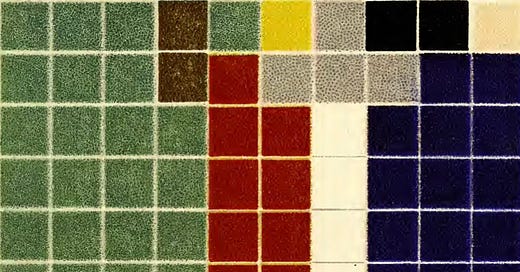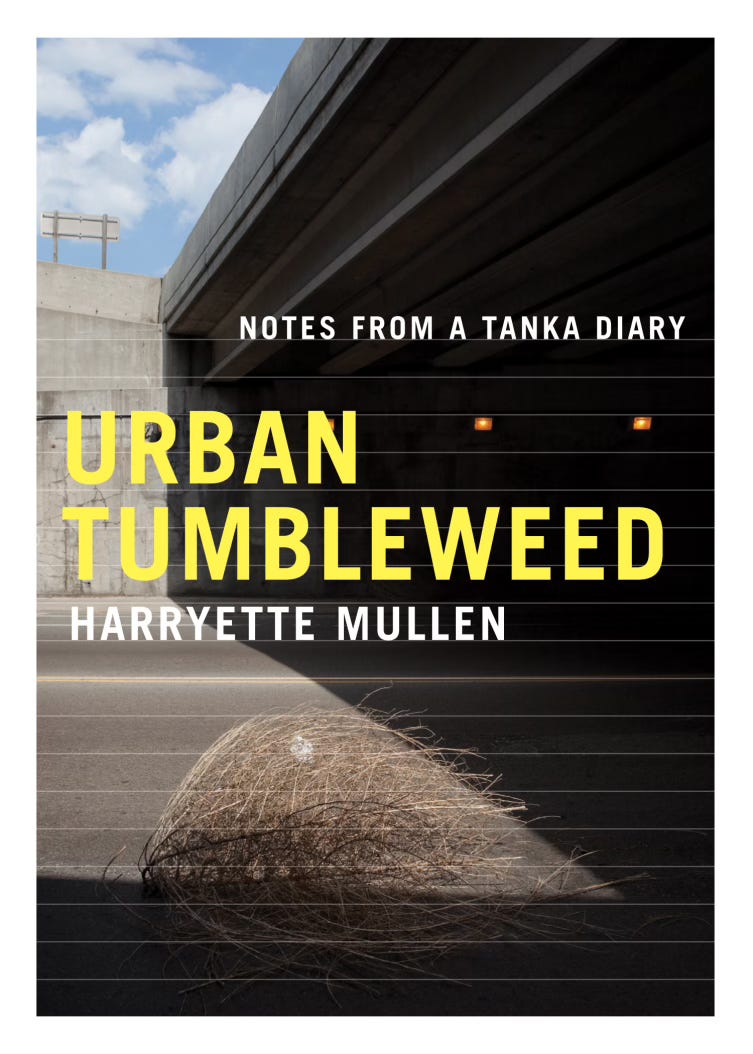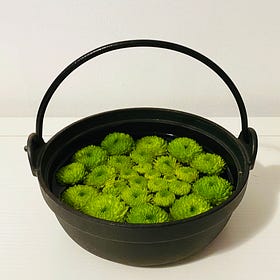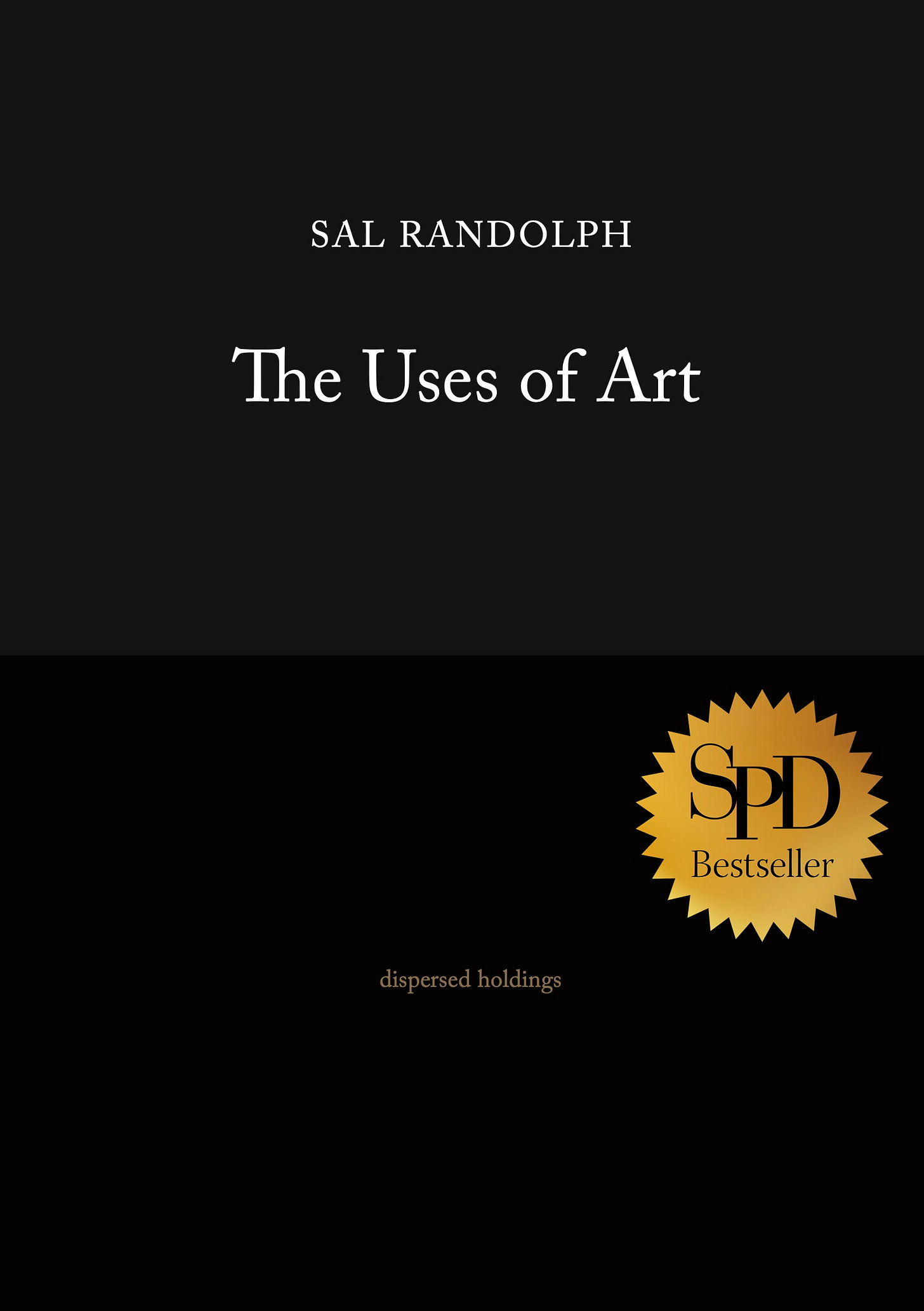
Dear Friends,
Do you keep a journal or diary? Would you like to?
During times of rapid change and crisis, archives and records of all kinds are vital. Everything you notice and observe, however small, however personal, has a particular gravity and importance.
The diary as a form is its own “way of seeing,” privileging daily noticing, and giving weight to the simple act of recording and documentation.
This month I had the pleasure of leading a workshop for the Village Zendo’s annual Urban Sesshin. We went on language-gathering walks in the neighborhood and then returned to compose our observations into tanka poems. Our inspiration was the tanka diaries of the poet Haryette Mullen.
I invite you try out this ancient and contemporary form as a way of documenting something of your own intimate experience of these extraordinary times.
— Sal
On Tanka
Tanka, or waka, are the ancestors of haiku. Waka, meaning “Japanese poem,” developed from songs in 7th century Japan. In the centuries that followed, these poetic forms became central to literary life, and came to include poetry games, contests, and exchanges.
Tanka (as waka came to be known) are less familiar to English speakers than haiku, but they are worth exploring. The slightly longer form of tanka offer more space to express whatever you see and experience; at the same time, their brevity makes them easy to experiment with playfully
Tanka typically have five lines, with a pattern of counted syllables that goes 5/7/5/7/7. Counting syllables can be an unfamiliar practice, but it has a kind of magic that activates the less conscious and more creative writing mind.
As the poet Harryette Mullen discovered, tanka are a form portable enough for walking and repeatable enough for making a diary.
Though tanka traditionally are arranged into five lines, Mullen found three lines to be more suited to her purpose. Feel free to find your own way within this form.
Harryette Mullen - Tanka Diary
My tanka diary began with a desire to strengthen a sensible habit by linking it to a pleasurable activity. I wanted to incorporate into my life a daily practice of walking and writing poetry. As committed as I am to writing, I needed a break in my routine, so I determined to alter my sedentary, unconsciously cramped posture as a writer habitually working indoors despite living here in “sunny California.” With a pen and notebook tucked into my pocket, I could escape from the writer’s self-imposed confinement, if only to walk from home to the local post office. With the tanka diary to focus my attention, a pedestrian stroll might result in a poem. Merging my wish to write poetry every day with a willingness to step outdoors, my hope was that each exercise would support the other.
…
While embracing the notational spirit of this tradition, I depart from established convention in both languages, choosing instead a flexible three-line form with a variable number of syllables per line. I try to adhere to the thirty-one-syllable limit, although I am aware that the number of syllables in a given word can vary, depending on the speaker and the circumstances. “California,” for example, sometimes has four syllables, at other times, five.
The brevity and clarity of tanka make it suitable for capturing in concise form the ephemera of everyday life. With refined awareness of seasonal changes and a classical repertoire of fleeting impressions, Japanese traditional poetry contemplates, among other things, the human being’s place in the natural world, an idea I wanted to explore in my own nontraditional way.
Tanka from Urban Tumbleweed
The botanical garden is just as I remember, although it is certain that everything has changed since my last visit. How many hilarious questions these fuzzy fiddleheads are inquiring of spring will be answered as green ferns unfurl? Walking the path, I stop to pick up bleached bark from a tree, curled into a scroll of ancient wisdom I am unable to read. Even in my dreams I’m hiking these mountain trails expecting to find a rock that nature has shaped to remind me of a heart. [via Poets.org]
I’m seeing lots of dead zebras lately on floors of elegant homes pictured in interior decorator magazines. “We proudly harvest rainwater”—a sign in a neighbor’s yard. With a deep barrel I could humbly and thankfully harvest rain. Several homeowners organize a neighbor- hood watch patrol after discovering used rubbers discarded on their lawns. Folded cardboard tent-shaped trap hanging among dark leaves of the lemon tree to capture the galling Mediterranean fly. A profusion of oleanders—to beautify the freeway and filter the air, though leaf, stem, and blossom all are poison. Dried-out snake on the road I brought as a curiosity to the child— who insisted we give it a proper funeral. Urban tumbleweed, some people call it, discarded plastic bag we see in every city blown down the street with vagrant wind. [via Harvard Review]
You can find more of Mullen’s tanka diary in Orion and at the Poetry Society.
Exercise: Walking Diary
Here, your object of attention is both the ordinary (sensory) world you live in and your own response to it. The practice is one of noticing and recording. Don’t judge anything you are thinking, feeling, or writing: simply document.
Go out on a walk for a half-hour or an hour (if you can’t physically go out, you can go on a “walk” around your indoor space or through a window).
Have with you a notebook or anything to write with.
While you are walking (or “walking”), collect simple and direct observations of the world around you — a the same time, collect observations of your inner world.
From these observations, compose some tanka, counting out 31 syllables and putting them into five lines (traditional 5-7-5-7-7) or three lines (á la Harryette Mullen), or in a form of your choosing.
Try to do this daily, or close-to-daily, accumulating the tanka into a diary or journal. Let this be a way of documenting your experience of this time you are in.
As with all of these “Ways of Seeing,” the initiating impulse is to expand our possibilities for engaging with works of art and deepening attention to everything around us. These exercises are perfect for time spent in museums, galleries, and studios. You can also bring them into the rest of your life and experiment with streets, libraries, parties, landscapes. Try them as writing or art-making prompts.
These practices work best if you give them some time.
As ever, interpret these instructions freely and intuitively. Make them your own.
The title Ways of Seeing is an homage to the continuing inspiration of the BBC TV series and book by John Berger.
Harryette Mullen’s Urban Tumbleweed
Haryette Mullen’s Urban Tumbleweed: Notes from a Tanka Diary is available from Graywolf Press.
More on Waka and Tanka
Genie Harrison, “Classical Words, Contemporary Feel: Development of the Japanese Waka Poem" Deeper Japan.
Lisa A. Joseph, “Heian Poetry Jam: The Poetic and Social History of Waka,” Wodeford Hall (a parafictional project).
Takeo Terao, “What Exactly is Waka,” Sustainable Japan, August 25, 2023.
William N. Porter, translator, “100 Verses from Old Japan (The Hyakunin-isshu), Sacred Texts.
Tanka as Letters
I wrote about an exchange of tanka with my friend, the artist Marina Zurkow. It includes more links and information about tanka.
Have you been keeping a diary, a journal, an archive, a record?
Further adventures and new ways of seeing can be found in my book, The Uses of Art.
Artist Sal Randolph’s THE USES OF ART is a memoir of transformative encounters with works of art, inviting readers into new methods of looking that are both liberating and emboldening.
Dazzlingly original, ferociously intelligent.
— Michael Cunningham
A joyful, dazzling treasure-box of a book.
— Bonnie Friedman
Here’s a guide, to waking up, over and over again.
— Roshi Pat Enkyo O’Hara








This is marvelous! I'm inspired to try it. Thanks, Sal.
Sal invites, instructs
noticing around, within.
Document witness.